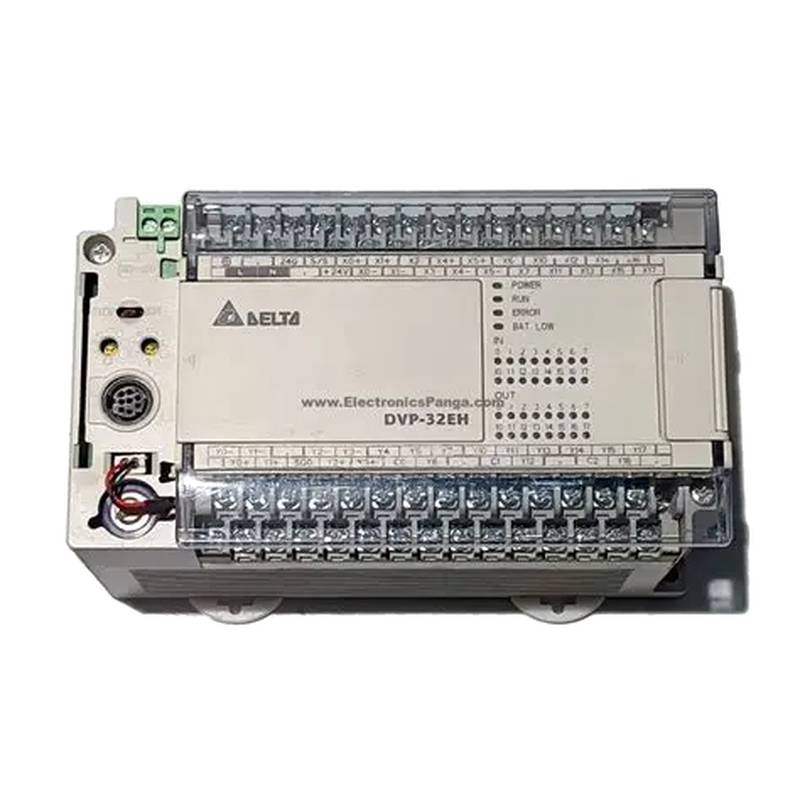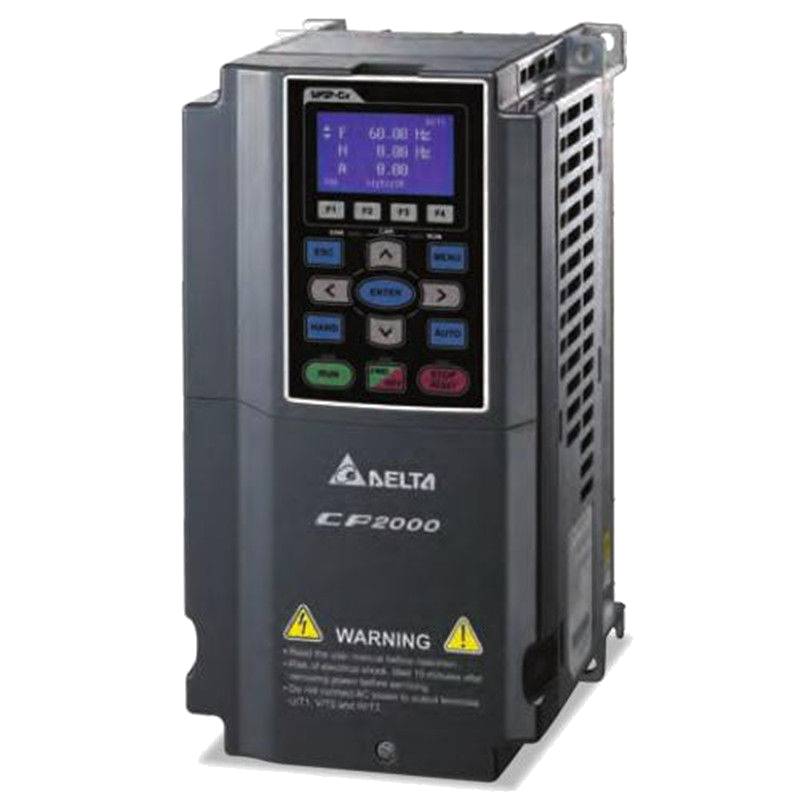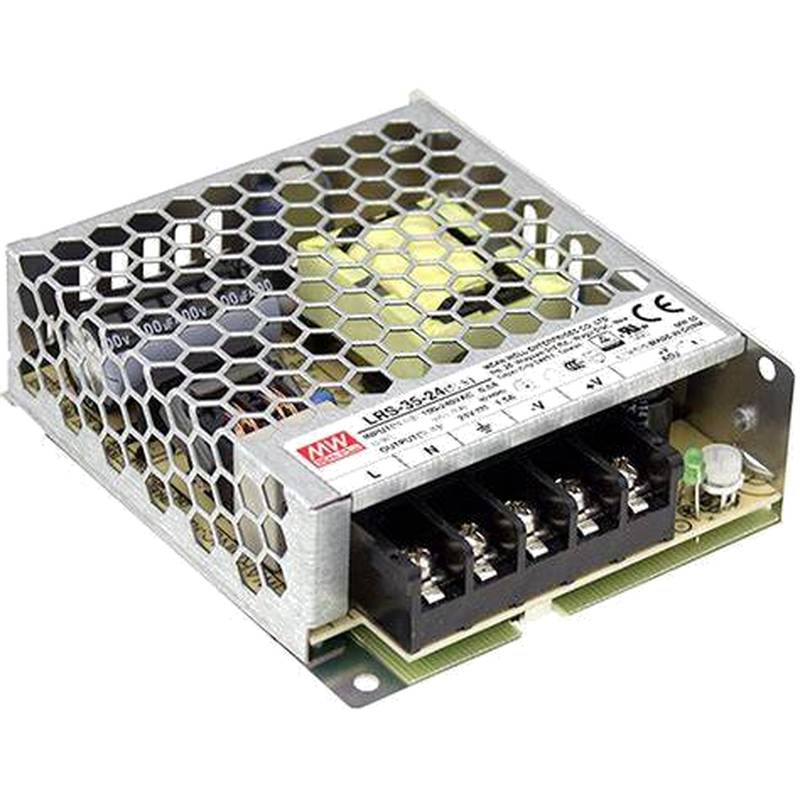
The Siemens 5SU1356-7KK40 is a high-performance Earth Leakage Protection Residual Current Circuit Breaker (RCCB) designed for robust safety and reliability in demanding industrial and commercial applications. This 40A, 30mA, 1-pole + neutral (1P+N) device, featuring a Type C tripping characteristic, offers superior protection against residual currents, preventing electrical fires and safeguarding personnel from electric shock. Its advanced design ensures consistent performance even under challenging environmental conditions, making it a critical component in modern electrical installations.
Product Specifications
| Feature | Specification |
| :------------------------ | :------------------------------------------ |
| Product Type | Residual Current Circuit Breaker (RCCB) |
| Siemens Model | 5SU1356-7KK40 |
| Rated Current (In) | 40A |
| Rated Residual Current (IΔn) | 30mA |
| Number of Poles | 1P+N (1 Pole + Neutral) |
| Tripping Characteristic | Type C |
| Rated Voltage (Ue) | 230/400V AC |
| Breaking Capacity (Icn) | 6 kA |
| Frequency | 50/60 Hz |
| Protection Class | IP20 (enclosure), IP40 (terminal) |
| Terminal Type | Screw Terminals |
| Mounting | DIN Rail (35mm) |
| Ambient Temperature Range | -25°C to +45°C |
| Certifications | IEC/EN 61008-1, IEC/EN 61009-1, VDE Standards |
Core Features & Market Positioning
The Siemens 5SU1356-7KK40 stands out in the market due to its exceptional tripping sensitivity and Type C characteristic, which provides enhanced protection against both sinusoidal alternating currents and pulsating direct current residual types. This advanced tripping mechanism is crucial for applications where inductive loads, such as motors and transformers, are prevalent, offering superior nuisance trip immunity compared to standard Type A devices. Siemens' reputation for engineering excellence and robust build quality positions this RCCB as a premium solution for professionals prioritizing safety, longevity, and reliable circuit protection in critical infrastructure. The device's high breaking capacity (6 kA) further reinforces its suitability for installations requiring substantial fault current handling capabilities.
Key Application Scenarios
This Siemens RCCB is ideally suited for a wide array of industrial and commercial settings where personnel and equipment safety are paramount. Its 40A rating and 30mA sensitivity make it perfect for protecting circuits in workshops, manufacturing plants, and agricultural facilities, especially those with heavy machinery or potential exposure to moisture. It is also an excellent choice for protecting sensitive electronic equipment in data centers and laboratories, where rapid and reliable fault detection is essential to prevent data loss and system downtime. The 1P+N configuration simplifies wiring in single-phase applications while ensuring neutral conductor protection, a common requirement in many building services and lighting circuits.
Practical System Integration Guidance
Integrating the Siemens 5SU1356-7KK40 into existing electrical systems is straightforward due to its standard DIN rail mounting and accessible screw terminals. Ensure that the upstream circuit breaker or fuse provides adequate overcurrent protection for the 40A rating of the RCCB. Wiring should follow standard electrical practices, connecting the line conductors to the input terminals and the load conductors to the output terminals, with the neutral conductor routed through its dedicated terminal. For optimal performance and safety, it is critical to ensure a proper earth connection is established and that the RCCB is installed in an environment within its specified temperature range of -25°C to +45°C.
Operation and Risk Mitigation
The primary function of the Siemens 5SU1356-7KK40 is to continuously monitor the balance of current flowing through the line and neutral conductors. If an imbalance exceeding 30mA occurs, indicating a potential fault or leakage current to earth, the RCCB will rapidly disconnect the circuit, thereby mitigating the risk of electric shock and fire. While the device itself is highly reliable, users should be aware of potential nuisance tripping, which can occur with transient overcurrents or certain types of electronic equipment. Regular testing using the integrated test button is recommended to ensure the RCCB's operational integrity.
Scalability & Long-Term Value
The Siemens 5SU1356-7KK40 is designed for seamless integration into standard modular electrical distribution systems. Its compatibility with other Siemens circuit protection devices and busbar systems ensures flexibility for future expansions or upgrades. While not directly an IIoT component, its reliable performance contributes to the overall stability of an electrical network, a foundational element for smart grid and digitalized industrial applications. The robust construction and adherence to stringent international standards (IEC/EN 61008-1, IEC/EN 61009-1) guarantee a long service life, representing a sound long-term investment in electrical safety and system reliability.
Frequently Asked Questions
What is the primary function of the Siemens 5SU1356-7KK40 RCCB?
The Siemens 5SU1356-7KK40 RCCB primarily detects and interrupts electrical circuits when it senses an imbalance of current, indicating a potential leakage to earth. This function is crucial for preventing electric shocks to individuals. It also serves to protect electrical installations from potential fire hazards caused by such leakage currents.
This device offers rapid tripping, minimizing exposure to dangerous fault conditions. Its 30mA sensitivity is ideal for personal protection applications across various settings. It is engineered for high performance and reliability in demanding environments.
The specific Type C tripping characteristic ensures it can handle inrush currents from inductive loads without unnecessary tripping. This makes it suitable for industrial machinery and motor control circuits. It provides a critical layer of safety.
What does "40A 30mA 1P+N C" signify for the Siemens 5SU1356-7KK40?
"40A" refers to the rated operational current the RCCB can continuously handle without overheating or tripping due to overload. "30mA" is the rated residual operating current, meaning it will trip if it detects a leakage current of 30 milliamperes or more to earth. "1P+N" indicates that the device protects one live (phase) conductor and the neutral conductor simultaneously.
The "C" denotes the tripping characteristic, which specifies how the RCCB responds to overcurrents. A Type C characteristic offers a higher tripping threshold for inrush currents, typically 5 to 10 times the rated current, making it suitable for circuits with inductive loads like motors. This prevents nuisance tripping during normal equipment startup.
In summary, this RCCB is a robust safety device for a 40-amp circuit, offering sensitive earth leakage protection with enhanced immunity to transient currents from inductive loads, while protecting both the phase and neutral conductors.
Where is the Siemens 5SU1356-7KK40 typically installed in an electrical system?
This RCCB is commonly installed in the main distribution board or sub-distribution boards of industrial, commercial, and residential buildings. It is typically placed upstream of the circuits it is intended to protect, acting as a final safety device. Proper integration ensures that the entire downstream circuit benefits from earth leakage protection.
Its modular design allows it to be easily mounted on a standard 35mm DIN rail within the electrical panel. This simplifies installation and maintenance by electricians and qualified personnel. Ensuring it is within its operating temperature range is key for longevity.
The 1P+N configuration makes it ideal for single-phase circuits, ensuring both live and neutral conductors are monitored. This provides comprehensive protection against indirect contact and fire risks in applications such as lighting, socket outlets, and small machinery circuits.
What are the main advantages of using a Type C RCCB like the 5SU1356-7KK40?
A significant advantage of the Siemens 5SU1356-7KK40's Type C characteristic is its improved tolerance for transient overcurrents often produced by inductive loads. This means it is less likely to trip unnecessarily when equipment like motors, transformers, or fluorescent lighting systems start up. This characteristic enhances operational reliability.
Compared to Type B or Type A RCCBs, Type C offers a balance suitable for many industrial applications. It provides enhanced protection against both sinusoidal AC and pulsating DC residual currents, but with a higher tolerance for inrush currents than Type A. This reduces nuisance tripping while still offering vital personal protection.
This makes the 5SU1356-7KK40 a versatile choice for environments with a mix of sensitive electronics and equipment prone to high startup currents. It ensures continuous operation where needed, while maintaining a high standard of safety against dangerous earth leakage.
How do I test the functionality of the Siemens 5SU1356-7KK40?
The Siemens 5SU1356-7KK40 is equipped with a built-in test button, typically marked with a "T". Regularly pressing this button simulates an earth leakage fault condition, causing the RCCB to trip and disconnect the circuit. This test should be performed periodically, as recommended by local electrical codes and safety standards.
Before pressing the test button, ensure that the circuit is not in use and that no essential equipment is running, as the RCCB will disconnect power. After testing, the RCCB can be reset by lifting the toggle switch back to the 'ON' position, provided there is no persistent fault condition on the circuit.
It is crucial to perform this test monthly or at least quarterly to verify the proper functioning of the tripping mechanism and the internal components. If the RCCB fails to trip during the test, it indicates a potential malfunction, and the device should be immediately replaced by a qualified electrician.
Can the Siemens 5SU1356-7KK40 be used for DC leakage currents?
The Siemens 5SU1356-7KK40, being a Type C RCCB, is primarily designed to detect sinusoidal alternating current (AC) residual currents and pulsating direct current (DC) residual currents. It offers a degree of protection against common fault types encountered in AC systems. For pure DC leakage currents, a different type of protective device might be necessary.
While it can detect pulsating DC, it is essential to understand its limitations. If your application predominantly involves pure DC leakage currents, it is advisable to consult the specific product documentation or Siemens technical support to determine the most suitable protective device. Different RCCB types have varying sensitivities to different current waveforms.
For comprehensive protection against all types of residual currents, including smooth DC, a Type B RCCB is generally recommended. Always verify the specific requirements of your installation and the types of leakage currents expected before selecting an RCCB.
What is the breaking capacity of the Siemens 5SU1356-7KK40, and why is it important?
The Siemens 5SU1356-7KK40 features a breaking capacity of 6 kA (kiloamperes). This specification indicates the maximum fault current the RCCB can safely interrupt without sustaining damage. It is a critical safety parameter that ensures the device can effectively isolate a circuit during a severe short-circuit fault.
A higher breaking capacity provides greater reliability and safety in installations where the potential for high fault currents exists, such as those close to the power source or in systems with large transformers. This ensures that the RCCB will not fail catastrophically during a fault, preventing further damage or hazards.
When selecting an RCCB, it's essential to ensure its breaking capacity is greater than or equal to the prospective short-circuit current at the point of installation. The 6 kA rating of the 5SU1356-7KK40 makes it suitable for many standard industrial and commercial distribution systems.
What are the environmental operating conditions for this RCCB?
The Siemens 5SU1356-7KK40 is designed to operate reliably within an ambient temperature range of -25°C to +45°C. It is also rated for a relative humidity of up to 95% without condensation. These conditions ensure its consistent performance in diverse industrial and commercial environments.
Protection against dust and water ingress is also specified. The enclosure typically offers IP20 protection, meaning it is protected against solid objects greater than 12.5mm, but not against water. The terminals usually have an IP40 rating. Proper enclosure and installation are crucial to maintain these ratings.
Adhering to these environmental specifications is vital for the longevity and correct functioning of the RCCB. Operating outside these parameters can lead to premature failure, reduced performance, or safety hazards. Always install the device in a suitable, protected location.
Is the Siemens 5SU1356-7KK40 compatible with other Siemens protection devices?
Yes, the Siemens 5SU1356-7KK40 is designed to be fully compatible with other Siemens circuit protection devices and modular system components. This ensures seamless integration within Siemens' comprehensive electrical installation systems, such as those utilizing their SIVACON or ALPHA series distribution boards.
Its standard 35mm DIN rail mounting profile allows it to be easily combined with other modular devices like miniature circuit breakers (MCBs), surge protective devices (SPDs), and contactors from Siemens. This facilitates the creation of customized and scalable electrical distribution solutions tailored to specific project needs.
This compatibility allows for flexible system design and future expansion. Electricians can confidently build complex panels knowing that Siemens components will work together effectively, offering a cohesive and reliable electrical installation.
What kind of wiring is required for the 1P+N configuration of the 5SU1356-7KK40?
The 1P+N configuration means the RCCB has terminals for one live (phase) conductor and one neutral conductor for both the input (supply) side and the output (load) side. The live conductor is connected to the designated phase input terminal, and the neutral conductor to the designated neutral input terminal.
Similarly, the protected phase conductor from the load is connected to the phase output terminal, and the protected neutral conductor to the neutral output terminal. It is critical to connect these conductors correctly to ensure the RCCB functions as intended, monitoring current balance between phase and neutral. Incorrect wiring will compromise safety.
Always ensure that the incoming supply and outgoing load conductors are terminated securely in the correct input and output terminals, respectively. Refer to the wiring diagrams provided by Siemens or consult a qualified electrician to confirm correct installation practices for the 1P+N configuration.

























